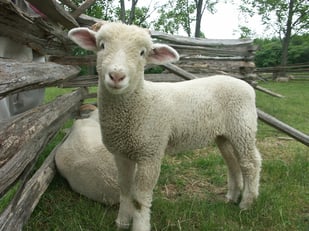Wattle Fence Lace Fence Worm Fence Living Snow Fence Papercrete Fence
1. Wattle
Historic Fencing
Wattle fences may be one of the oldest types of fencing still in use today. They were used in England long before medieval times. Traditionally the fences are built from straight, slender, flexible suckers or saplings of the willow tree up to 1-1/2" diameter. After the leaves are stripped, the ”withies” are woven between upright wood posts. Willow is an ideal wood because it is pliable and resists splintering. Other species, such as alder, can also be used.
Various Uses and Benefits
Wattle fences are very strong and long-lasting. Willow posts often take root in the ground creating a living fence, perfect for containing animals and enclosing gardens and orchards. And the density of the fence makes an ideal windbreak.
The rustic, handwoven appearance of a wattle fence adds an attractive defining touch to any yard, garden or landscape. Some possible uses:
- arches
- towers
- trellises
- plant supports
- garden accents
- hurdles or fence panels
- attractive garden borders to line walkways
Wattle construction is a great way to use trimmings for fence building materials. Instead of burning or destroying branches, use them in a creative way to beautify and add interest to your landscaping. Even though
2. Lace Fence
Change Up that Chain Link
Having grown up in a neighborhood where the lawns flowed into one another, when some new folks moved in and put up a stark chain link fence around the perimeter of their property, the neighbors were collectively horrified. Mercifully, they grew ivy on it.
However, a new type of fencing has been introduced by the Demakersvan design studio in Holland. Called lace fence, it is a combination of chain link fabric and the art of lace making.
The design possibilities - from floral themes to contemporary patterns and designs - are infinite. And you can submit your own designs. With this opportunity to customize each job, every lace fence is unique. Chain link fencing, a basic functional fence, can become a decorative and attractive work of art! Imagine coming up with a theme related to the property or space you are defining.
Many Possibilities
Lace Fence can be woven from both 11 and 12-1/2 gauge wires, either galvanized or vinyl coated. The wire mesh is securely clamped to a tubular frame. There are many different types of locations - both interior and exterior - where Lace Fence is currently in use, including but not limited to:
- barrier fences in parks and other public areas
- interior partitions in banks, restaurants, hotels and gyms
- railing safety mesh on stairways, decks and balconies
- decorative panels on the facades of commercial buildings
- safety fences on apartment buildings
- museum displays
Photograph of Lace Fence at The Design Center at Philadelphia University is used by permission. See this blog article to see more pictures of this unique fencing.
3. Worm Fence
The Definition
A fence, zigzag in
This style of fencing is also known as Snake Fence, ZigZag Fence and Battlefield Fence - the latter term due to its presence on many Civil War battlefields (see video below). Worm Fence (also known as Virginia Worm fence) has been used in America since the 1600s. Easy to build, split wood rails are stacked on each other to create the fence. The ends of the rails alternate, creating the openings. For stability of the stacked rails, each section of fence is angled from the previous one, giving the appearance of a worm or snake.
No Post Holes; Adapts to Uneven Terrain
No vertical posts are required to build the fence. This both eliminates the need to dig post holes and makes the fence easy to install - a particular advantage in rocky terrain. Sometimes a pair of crossed posts would be used at the junction point of each section. This would allow the fence to be closer to a straight line. With a plentiful supply of wood and ease of construction, it is easy to understand why worm fence was the most common type of fence used in America by the late 1800s. It is gaining popularity today for use as a rustic fence that will add to the appearance of a piece of property and it is used in many outdoor historical museums.
Here's a quick overview of colonial fence styles:
4. Living Snow Fence
Strong winter winds can cause dangerous driving conditions. Not only does blowing snow dramatically reduce visibility but also treacherous drifts can accumulate across roadways and other open unprotected areas.
A Natural Windbreak
Several states have successful programs in place using
When positioned properly, living snow fences can greatly reduce the amount of plowing needed to keep roads open for travel. Winter travel is safer.
Aesthetic and Environmental Advantages
There are benefits in addition to safety when living snow fencing is used:
- Highway beautification is enhanced with native species of plants
- Environmental stewardship is promoted
- Trees, shrubs and grasses are excellent wildlife habitat all year
- Living snow fences slow and reduce erosion
- When measured during winter months the temperature of the pavement surface in areas protected by living snow fence were higher than the surface temperature in unprotected areas; in areas with severe cold, this greatly increases the effectiveness of chemicals used to prevent icing
- It is no longer necessary to install and remove wood or plastic snow fence
5. Papercrete Fence
Very Alternative
Ever heard of a fence made out of papercrete? What exactly is papercrete? This video will show you how to make a 4' by 8' section of fencing - real DIY stuff, folks. A recipe follows--
Papercrete Ingredients--
- 30 pounds of concrete
- 18 pounds of joint compound
- 1 pound of boric acid
- 90 pounds of newspapers
- Just add water and you're good to go!
But...would you really want a papercrete fence around your house?











